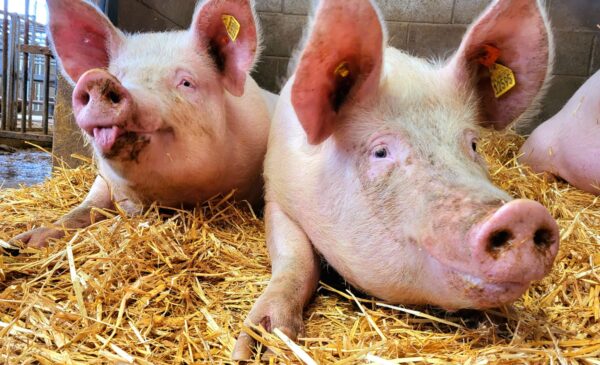The disposal of animal carcasses on farm can present significant environmental, animal and human health risks. There is a serious risk of spreading disease to stock on that holding or on neighbouring farms, as well as a public health risk, including pollution of water courses. A summary of the disposal routes is shown in Figure 1, taken from SEPA Regulatory Method (WAT-RM-46)- Regulation of Animal Carcass Burial.
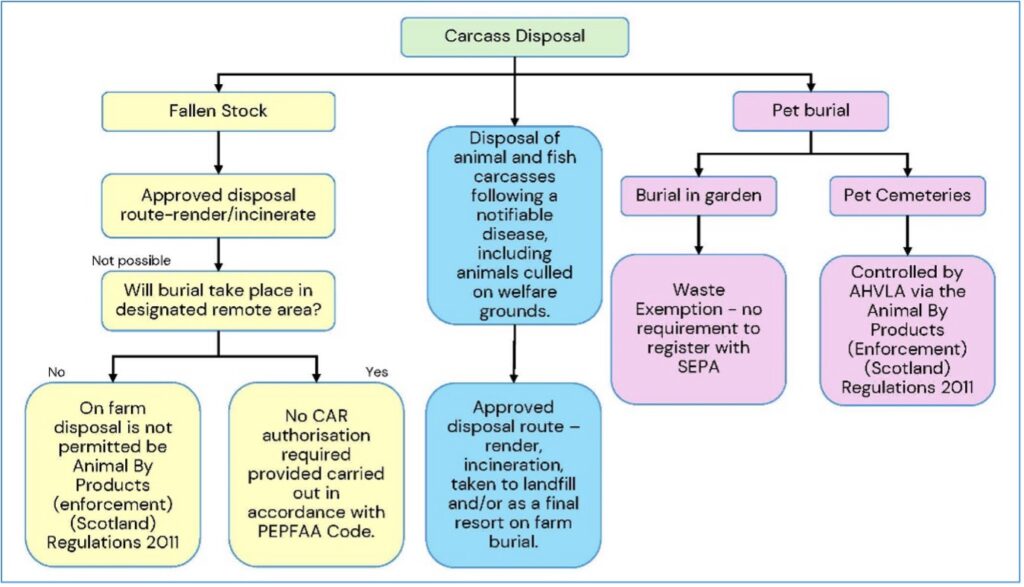
Adapted from: SEPA (2020) Regulatory Method (WAT-RM-46) Regulations of Animal Carcass Burial
Fallen stock is any animal that has died of natural causes or disease on a farm, or that has been killed on a farm for reasons other than human consumption. Animal by-products (ABPs) are entire animal bodies, parts of animals, products of animal origin or other products obtained from animals that are not fit or intended for human consumption.
Animal by-products include:
- Animal carcasses and parts of animal carcasses – including fish.
- Manure from farmed animals.
- Blood, hides, skins, hooves and horns.
- Feathers, wool, hair and fur.
They must be dealt with in accordance with strict regulations designed to prevent harm to people, animals and the environment.
Wild animals are not covered by animal by-product controls, unless they are thought to be diseased. Wild animals include:
- wild deer
- wild boar
- rabbits
- foxes
- rats
- squirrels
- moles
- wild birds
If you have killed a wild animal as vermin or to reduce its population, you need to dispose of the carcass appropriately. This includes animals caught in a trap or snare, and animals that have been shot. Wild animal carcasses are classed as waste, and you have a legal duty of care to handle, store and dispose of them safely, so you don’t cause pollution or attract vermin. More information can be found on the waste management section of this website or NetRegs.
The EU Animal By-Product Regulation 1069/2009 and its accompanying implementing Commission Regulation 142/2011 came into force in Scotland on 4 March 2011 and among other measures it prohibits the burial or burning of fallen stock on-farm. The EU Regulations are implemented by the Animal By-Products (Enforcement) (Scotland) Regulations 2013 and the Animal By-Products (Miscellaneous Amendments) (Scotland) Regulations 2015.
The Competent Authority Authorisations provide derogations not covered in the above legislation- specifically;
- C4: authorisation to dispose of certain category 1 material and category 2 and 3 material by burial or other means where access is difficult due to geography, climate or natural disaster
- C5: authorisation to dispose of category 1 material (except for TSE suspects/confirmed cases) and category 2 and 3 material by burning or burial following an outbreak of notifiable disease
These regulations provide for a derogation to allow the continued on-farm disposal of fallen stock in the designated remote area if an approved disposal route is not available, which covers most of the Highlands and Islands and Argyll. This is the only area in Scotland where on-farm disposal is permitted.
Local Authorities (LAs), SGRPID and Animal and Plant Health Agency (APHA) hold the enforcement responsibilities for various aspects of the Animal By-products Regulations (ABPR).
Irrespective of any other considerations, if ill health or death is thought to be caused by a notifiable disease, this must be reported to the Divisional Veterinary Manager at the local Animal and Plant Health Office. In such circumstances carcasses should be made available for postmortem examination. In cases of unexplained sudden death of cattle, veterinary advice must be sought in order to eliminate anthrax as the cause of death. In such cases, the carcass will be routinely tested.
All sudden unexplained cattle deaths must be reported immediately to the local veterinary inspector or local Animal Health Office. The carcasses will be routinely tested for anthrax.
Fallen cattle must be tested for BSE if they are:
- 48 months or over if born in the UK or a EU Member State (excluding Bulgaria, Romania and Croatia)
- 24 months or over if born in all third countries and Romania, Bulgaria and Croatia.
Most cattle keepers in the remote area are still required to submit adult fallen cattle to a sample site for BSE testing.
If carcases are unrecoverable, this must be reported to your local APHA office immediately.
Owners in the UK must contact a collector within 24 hours of their animal’s death, to arrange delivery to an approved sampling site within 72 hours of the animal’s death. If you are delivering the carcass yourself, you must contact an approved sampling site to agree this within 24 hours and you must deliver the carcass within 72 hours of the animal’s death.
You must also contact your local APHA office immediately if you think an animal has died of a notifiable disease.
Explainable deaths of cattle 24 months old or under are not currently subject to special rules and may be dealt with as described in Disposal Options: All other deaths.
The Scottish Government have produced Animal by-products: disposal guide which should be consulted when disposing of animal by-products.
Fallen stock must be collected, identified and transported without ‘undue delay’. This means as soon as reasonably practical under the circumstances (usually within 48 hours of death).
A number of options exist for disposal of carcasses of animals that die on the farm. The Animal By-Products (Scotland) Regulations stipulate that disposal should be by an approved route such as rendering or incineration. It is also permissible to consign carcasses to the local knackery, hunt kennel or zoo for disposal purposes. The routine on-farm disposal of fallen stock is only permitted within the designated remote area, and even then, only where an approved disposal route is not available. Where carcasses are to be disposed of by burial or burning on a holding in the remote area, this must be done in accordance with guidance contained in this section.
Disposal to a renderer or incineration plant
Your local Animal and Plant Health Agency (APHA) Office should be consulted as to renderers or incinerators in the area that are suitable for carcass disposal. The local authority is under no obligation to collect or dispose of animal carcasses.
If carcasses are unrecoverable
If carcases are unrecoverable, this must be reported to your local APHA office immediately.
On-farm disposal
On-farm disposal may only be practised within the designated remote area (Figure 2) and where there is no alternative disposal route.
Where on-farm disposal is being carried out, methods such as burial, incineration or burning in the open air should be carried out with care to prevent serious air, soil or water pollution. In such situations the following guidelines should be fully observed.
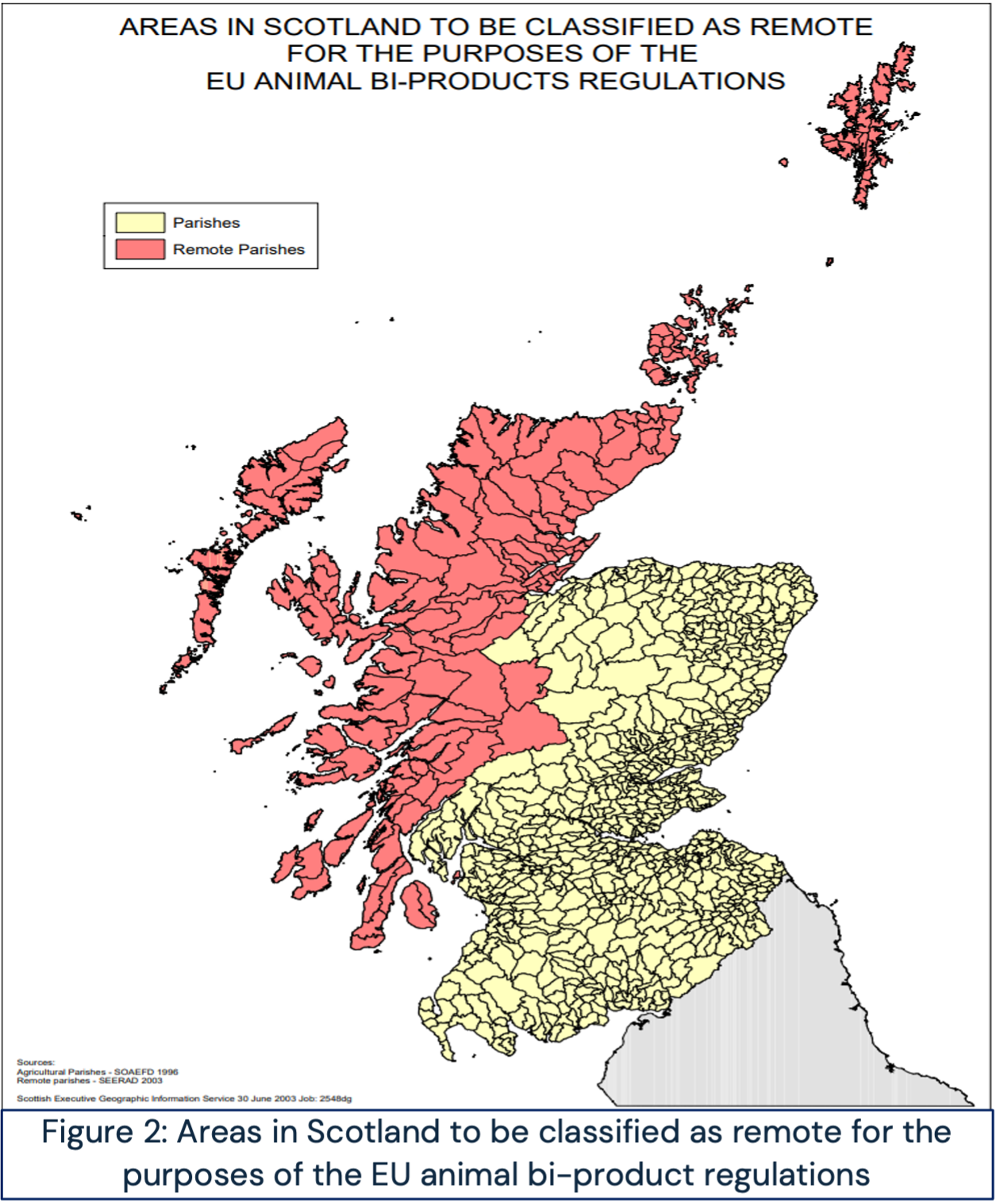
It is an offence under the Dogs Act 1906 to leave an animal carcass unburied in a place where dogs may have access to it. Under the Animal By-Products (Scotland) Regulations, fallen stock must be disposed of without undue delay.
Under no circumstances should carcasses remain unburied or be disposed of in or near watercourses. It is an offence under The Water Environment (Controlled Activities) (Scotland) Regulations 2011 (as amended) to cause or knowingly permit any poisonous, noxious or polluting matter or solid waste to enter any controlled waters. Apart from risking prosecution for causing water pollution, there is a serious risk of spreading disease to stock on neighbouring farms as well as posing a public health risk.
If a notifiable disease is not suspected, or has been eliminated as a possible cause, and other means of approved disposal are not available, burial on-farm within the designated remote area may be considered if the following criteria can be satisfied. The burial site:
- Must be at least 250 metres from any well, borehole or spring used as a source of drinking water (where byelaws specify a greater distance, this must be complied with). Byelaws may also impose restrictions relating to the distance of a burial site from a surface source;
- Must be at least 50 metres from any other spring or watercourse, and at least 10 metres from any field drain;
- Must have at least one metre of subsoil below the bottom of the burial pit, and the pit must be dug deep enough to give at least one metre of covering soil;
- Where possible, sites on soils which are moderately permeable should be used.
- Avoid waterlogged sites and sites on free draining subsoil. Ensure that the pit is dry after it is dug.
- Do not use a pit which fills with water.
- Do not bury carcasses in polythene bags or other impervious material.
- Do not bury carcasses on archaeological sites or on sites designated for their nature conservation interest.
Records of all burial sites, including a field plan, must be kept together with number and type of stock buried and dates of burial. These records must be retained for a minimum of two years.
The Water Environment (Controlled Activities) (Scotland) Regulations 2011 and their amendments, aim to protect groundwater quality from pollution by certain substances. The burial and subsequent decomposition of animal carcasses could pose a threat to groundwater quality and possibly to human and animal health, particularly if drinking water supplies might be affected. If there is doubt over the suitability of a proposed burial site or scale of burial then SEPA should be consulted to ensure that the legislation is complied with. Under these circumstances, the local authority should be consulted first to ensure that the requirements of the Animal By-Products (Scotland) Regulations are taken account of.
Dogs and foxes must not gain access to carcasses. Carcasses placed in the pit must be covered immediately with a sufficient depth of soil (at least 1 metre) to deter scavenging animals and birds. Placing an animal carcass in a manure store is not acceptable.
Lined disposal pit
For small carcasses such as poultry mortalities and foetal material, a pit with an impervious wall (precast concrete rings or glass fibre), and with its base open to the soil, may be used. It should be covered with a substantial top, fitted with a manhole cover. The pit should be sited on an area that fulfils the criteria given for burial sites and the local authority and SEPA should be consulted before construction commences.
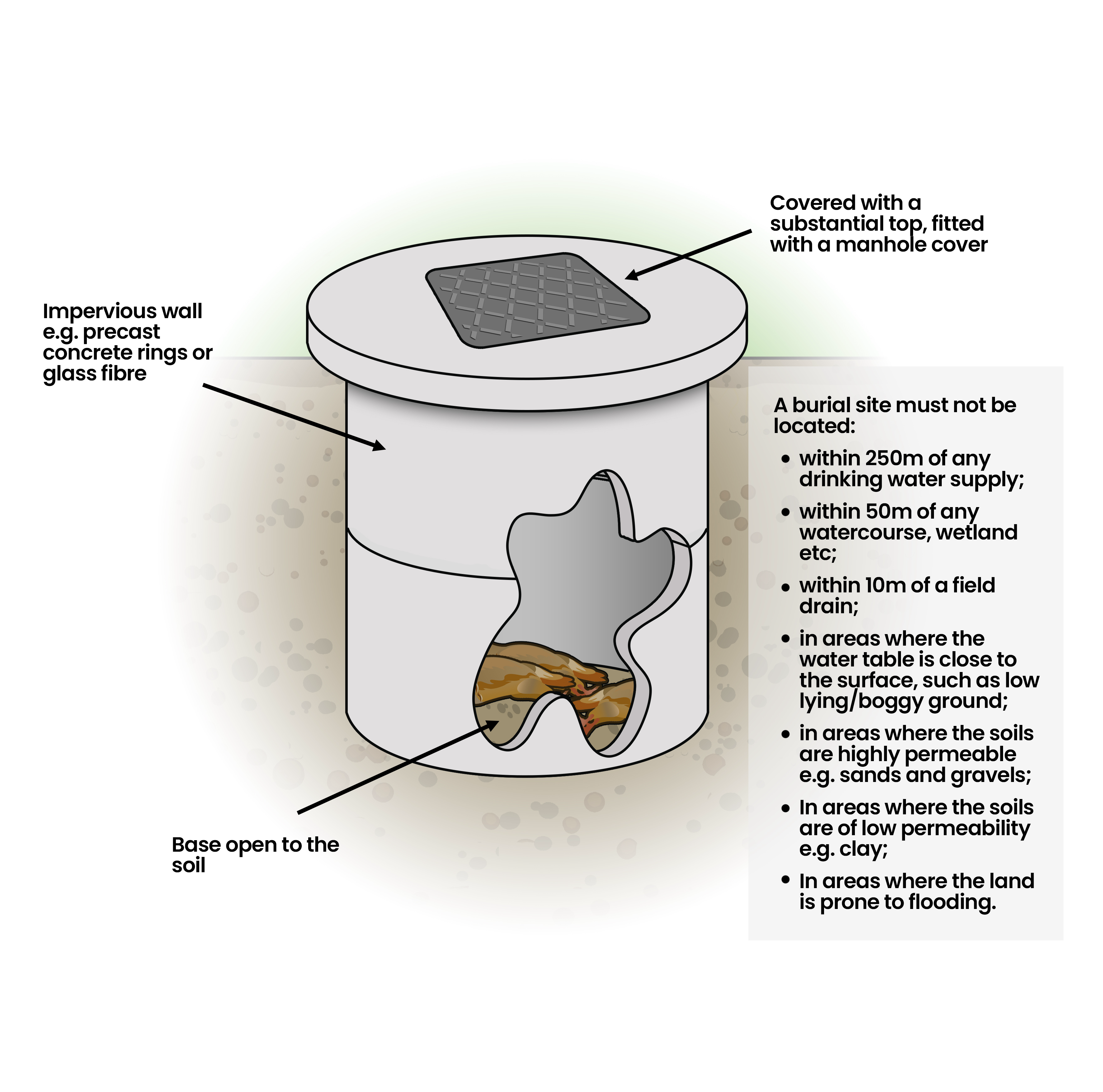
These pits work best if started in spring or summer, using a bacterial starter. A slit in the abdominal wall to release intestinal contents also helps, as does the addition of a few gallons of water each week to keep the contents moist.
LIME MUST NOT BE ADDED.
Be aware of the requirements of any farm quality assurance scheme concerning what is, and is not, acceptable for disposal of fallen stock.
The disposal of carcasses by burning is not an everyday allowed activity. The approval of burning will only be considered at times of a notifiable disease outbreak by regulatory bodies. You must comply with Scottish Government legislation.
Under the Clean Air (Emission of Dark Smoke) (Exemption) Regulations 1969, carcasses of animals which:
- have died or are reasonably believed to have died because of disease or,
- have been slaughtered because of disease or,
- have been required to be slaughtered in pursuant of the Animal Health Act 1981
Are exempt from the Clean Air Act 1993 providing that:
- there is no other reasonably safe preferable method of disposal; and
- the burning is carried out in such a manner as to minimise the emission of dark smoke; and
- the burning is carried out under the direct and continuous supervision of the occupier of the premises concerned, or the person authorised to act on his/her behalf.
If burning is approved by regulatory bodies:
- Fires should be located as far as possible from (and, where practicable, downwind of) public highways and residential areas.
- A shallow pit can be dug with additional cross trenches to provide an adequate air supply to the base of the fire, but this is not always necessary.
- The primary fuel, (straw, fuel oil, heavy untreated timbers and/or coal) should be placed in the base of the fire and the carcass(es) placed on top.
- The design should be so as to encourage burning to take place up and through the material rather than from the top down. This burning process gives a much higher temperature and also reduces the risk of creating dark smoke.
- The fire should not be overloaded with carcasses, and sufficient fuel should be provided to ensure complete combustion.
- The burning should be carried out under the direct and continuous supervision of the occupier of the premises, or a person authorised on his behalf.
- A fire extinguisher and water supply or bowser should be available for emergency use.
- Burning should take place only in daylight hours, and the local fire brigade should be alerted to the event prior to igniting the fire.
Dead stock should be burnt, preferably in an incinerator, within 12 hours of death.
Incinerators should be equipped with secondary combustion chambers where temperatures of greater than 1000°C over a flue gas residence period in excess of two seconds can be achieved throughout the incineration process. Professional engineering advice should be sought with regard to sizing, selection, installation and operation of incinerators and carcass storage facilities. Incinerators designed for, or operated at, loading rates of greater than 50kg/hour must be authorised by SEPA and operated in accordance with the Scottish Executive’s Local Authority Guidance for Animal Carcass Incineration Processes under the Environmental Protection (Prescribed Processes and Substances) Regulations 1991. Smaller incinerators of less than 50kg/hour are regulated by the Animal and Plant Health Agency. New incinerators are covered by the Pollution Prevention and Control (Scotland) Regulations 2012 All existing incinerators will eventually be covered by these new Regulations.
The design-loading rate of the incinerator should not be exceeded at any time.
The outbreak of a notifiable disease, such as foot and mouth, may require the rapid and wholesale slaughter of animals at the infected premises and, possibly, of animals on neighbouring properties. The disposal of carcasses on-farm in a disease outbreak situation is not confined to the designated remote area. Each farm should prepare for such an outbreak and consider carefully the sites which might be suitable for burning and/or burial to take place. This will be useful in determining what action needs to be taken in an emergency.
The Animal and Plant Health Agency (APHA) will be able to advise on what needs to happen to control any disease outbreak. Other agencies such as the police, fire brigade, local authority, public health consultants, Scottish Water and SEPA will also have a role to effectively protect human health and the environment. It is better for farmers and crofters to be prepared, than to have to consider these issues in the midst of an emergency.
Contingency plan
All those who keep livestock should prepare a contingency plan for the event of a disease outbreak. This plan should be reviewed and adhered to. The Scottish Government has produced a template to guide showing the information which should be recorded and kept. The plan should:
- inform you of the likely consequence of an outbreak of disease on your premises.
- improve biosecurity measures on your premises.
- improve movement controls.
- help prepare your business for an outbreak event.
- allow you a means of quickly providing information to APHA to help control and manage the outbreak, allowing your business to return to productivity as quickly as possible.
- Lay out pollution prevention measures to reduce the impact on the environment and animal and human health.
The template can be found here https://www.gov.scot/publications/animal-disease-outbreak-contingency-plan-template/
The Government has previously recognised the cost to farmers of meeting the requirements to dispose of all fallen stock using approved methods. As a result, it developed the National Fallen Stock Scheme, a now long-established Community Interest Company that helps farmers by facilitating a cost-effective method of disposing of fallen stock in the areas out with the derogation. Livestock farmers can sign up for free membership of the scheme with monthly invoices based on a pay-as-you-go basis, depending on the farmer’s usage of the Scheme. Farmers are able to choose their preferred approved collector from a list provided by the National Fallen Stock Company. Further details of the Scheme are available from www.nfsco.co.uk.
Related resources
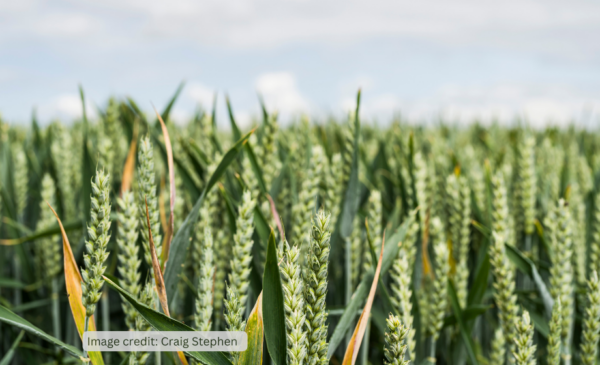
Integrated Pest Management and the Voluntary Initiative
How can you improve pesticide management on farm?
How can you improve pesticide management on farm? In this podcast we chat with Neal…
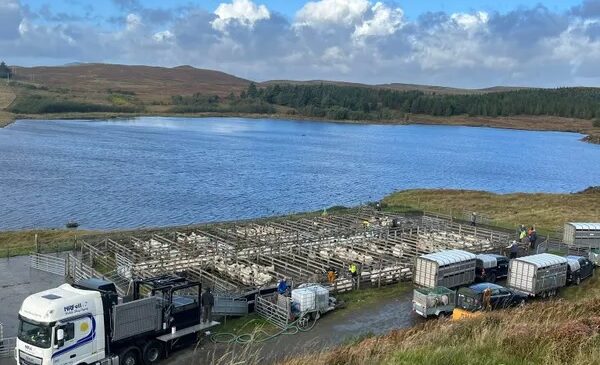
Environmental and animal welfare considerations of dealing with sheep scab
This podcast focuses on how farmers can manage sheep scab. In particular discussing what farmers need to be aware of and the rules and regulations that need to be followed when managing sheep dip from animal welfare, to environmental regulation. Photo credit: ©Neil Fell

